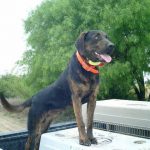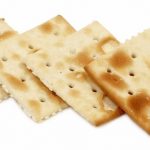Have you seen the viral post from 2018 showing a fat Corgi getting his haircut? While many people thought it was cute, a number of people could not help but express their genuine concern for the dog, stating that it was such an obese Corgi.
Seeing pictures of fat corgis is nothing new but this does not mean pet owners should take this lightly. All dogs including Pembroke and Cardigan Welsh Corgis, could suffer from obesity. Genetic factors, diet, and exercise may contribute to Corgi weight problems. If you have a Corgi, read this post to help you maintain your pet’s healthy weight.
The Truth about Dogs and Obesity
Obesity refers to a condition wherein the excess body fat in the body causes adverse effects in a dog’s health. It was officially classified as a “disease” during the One Health meeting at the World Small Animal Veterinary Association. It is considered the largest problem seen in this breed at the moment.
The ideal weight for a full-grown Pembroke Welsh Corgi dog should not exceed 30 pounds for males and up to 28 pounds for females. For Cardigan Welsh Corgis, the ideal weight is 30-38 pounds for males and 25-34 pounds for females.
A Corgi weighing more than the accepted weight for his type does not meet the American Kennel Club breed standard. Besides not meeting the standard, obesity puts a Corgi at risk of a number of health problems such as heart disease, diabetes, and even tumors. It can eventually reduce a Corgi’s lifespan, which is 12-15 years on average.
Corgis are achondroplastic, meaning they have a “dwarf-like” appearance. If a breed like Corgi with stubby legs becomes overweight, the extra pounds can be extremely hard on the dog. Thing is, being overweight is not always obvious on them because of their fur or fluffiness. It can be hard to tell just by looking.
Signs of Obesity in Corgis
The best way to determine obesity in Corgi is to measure its weight. To do this at home, use a standard weighing scale and lift your Corgi with both arms while stepping onto a scale. Take note of the number then weigh yourself without your dog. Subtract the result from the measurement you recorded earlier.
There are gestures that will tell you a Corgi is putting on too much weight. One of them is if it encounters difficulty licking parts of his body. That is because he cannot bend well because he just packed on extra weight. Touch his ribs and if you can no longer feel it with light pressure, it means he already weighs more than he should.
Aside from observing if your Corgi can still groom himself, keep an eye on him when you go out for a walk. If he used to enjoy long walks but suddenly wants to stop just after a few kilometers, it could be a sign that he is having breathing problems because of being overweight.
An obese Corgi does not have a palpable ribcage or a ribcage that can be felt. It could also have distended or swelling abdomen. In terms of activities, it could be lethargic and will show no interest in moving around.
Causes of Corgi Weight Problems
- Genetic makeup – one of the possible reasons for obesity in Corgis is their genes. It is so easy for them to become overweight because they have the extra errant copy of the fibroblast growth factor 4 gene. This gene, which is essential for bone growth, retards their growth and gives them the stunted legs.
- Nutrition – some pet owners give in to the temptation of offering snacks to their pets, without thinking about its consequences. Don’t be fooled by a Corgi’s expressive eyes when it asks for more food. For young dogs, serving one-fourth cup of puppy food four times a day is the recommended feeding amount. The quantity increases to half a cup but the frequency should be reduced to twice a day as the dog turns a year old.
- Exercise – the suggested amount of exercise for Corgi is about two hours per day. For puppies, it can be 30-45 minutes a day. You may have two sessions per day, one in the morning and one in the afternoon. If the weather does not permit going outside for a walk, play fetch or tug of war indoors. Playing hide and seek with your Corgi is also a nice way to train him basic commands like staying.
Effects of Obesity in Dogs
As with human obesity, there are consequences to canine obesity. Studies suggest that being overweight reduces a dog’s life span by up to two years. Take note of the following, especially if you have a Corgi who often gets spoiled with treats:
- Arthritis – obesity can put on extra pressure on a dog’s joints. It can exacerbate hip dysplasia which is one of the common Corgi health problems. A Corgi suffering from hip dysplasia will have decreased range of motion because it can be painful. This can lead to arthritis when the joint cartilage deteriorates.
- Inflammation – as with humans, obese dogs are more vulnerable to developing subclinical conditions. These refer to body inflammation and having abnormally high cholesterol, which could later cause diabetes and pancreatitis.
- Liver problems – fat is stored in the liver and we know unhealthy amounts of fat in the said organ can affect its performance. The worst thing to happen is for a Corgi to suffer from hepatic lipidosis or decreased function of the liver.
- Difficult birthing- in overweight female Corgis, one of the negative consequences is dystocia or difficulty giving birth. Bitches with such condition usually undergo C-section and vet assistance in order to deliver the pups safe.
- Breathing problems – if a Corgi has a pre-existing case of laryngeal paralysis, it could become worse if he is obese. The breathing difficulty can eventually case heart-related problems because obesity makes it hard for the organ to work as it should.
- Lipomas –Corgis with metabolic issues have a higher chance of acquiring benign fatty tumors. Vets suggest maintaining a healthy weight and offering a well-balanced diet are among the best ways to prevent lipomas.
- Dermatological diseases – your Corgi could have extra skin folds that can be a thriving ground for bacteria and later cause skin infection. The dog could have an unusual odor and he might suffer from skin redness due to scratching.
What to Do With an Obese Corgi
If your dog weighs more than he should, don’t lose hope. There are a few things you can do to help your Corgi get back into shape. They involve being strict with the dog’s diet and encouraging him to keep moving.
The first thing to do is to assess your pet’s current eating habits. Does he often eat table scraps? If this is the case, you have to keep an eye whenever you dispose of leftovers. Some dogs even raid the trash to look for pieces of food. Is your pet spoiled? Some Corgis are so used to receiving treats from their owners that eating human food already becomes a norm.
Next, gauge if your Corgi is getting the right amount of exercise he needs. They often have a very active lifestyle and this comes as no surprise given that they were originally bred to herd. All herding breeds need tons of exercise but it should not always be walking or running. You can make it fun so your buddy will be encouraged to play and get moving.
For Corgis with a moderate to active lifestyle, feeding a dog food with high-quality protein is the best option because it can prove them with the sufficient energy they need for the day and it helps build strong joint, bones, and muscles. However, you have to watch out for the types of protein you give your dog.
Make sure they are the digestible type and in amounts that are appropriate for your pet. It is not necessary that you are giving meat all the time. You can offer a combination of meat-based and plant-based protein as long as it provides a good amount of essential amino acids.
The best meat-based sources of protein are eggs, salmon, chicken, turkey, and venison. Meats derived from organs are also highly digestible so you could offer liver from time to time. Potato is high in protein but feed it in moderate amounts because it is still high in carbohydrates. Limit grains because the proteins in them are quite difficult to digest.
If your dog is diagnosed with kidney disease or if it is a senior dog, your vet may warn about giving high amounts of protein. Dogs with kidney disease require a special diet. The amount of protein they could have is 13-18% per day on a dry matter basis.
Always opt for a low-fat and high-fiber dog food. Fiber is effective in controlling blood sugar and can facilitate weight loss. The best sources of fiber for dogs are Brussels sprouts, broccoli, and green beans. For the joints, it helps if the dog food contains chondroitin and glucosamine. They help slow the degeneration of joint cartilage and even help alleviate existing joint pains.
There are pet nutritionists who advise giving “fresh and not less” to overweight dogs. This makes sense because it is important to meet the dog’s nutritional requirements while limiting his caloric intake. You could offer a fine selection of fruits and vegetables, along with high-quality meats. Consider zucchini, asparagus, and carrots.
Lean meat is a great option for obese dogs because it contains high amounts of protein but low amounts of carbohydrates. While a dog can neutralize the bacteria from raw meat, it is still recommended to cook it gently especially if your Corgi has a sensitive stomach. In able to compensate the enzymes lost due to heating the meat, you may add a pinch of digestive enzymes into your dog’s meal.
It is not essential to give your dog treats. A dog will not say no to peanut butter dog biscuit and cookies but better avoid these kinds of desserts even if they are labeled as dog-friendly. If you need to provide snacks during training, choose healthy ones. A good low-calorie option, instead of sweets, is air-popped popcorns with no salt. Raw, crunchy veggies are also ideal for dogs, especially those who need to reduce some weight.
Furthermore, training sessions and mentally stimulating exercises will keep a dog occupied. There are puzzles and interactive toys specially created for pets. It prevents the need to snack as often out of boredom, especially if your Corgi is confined in an apartment where all he does is lounge around. Many dogs end up eating non-edible materials because they don’t have enough activity.
Still, we suggest you schedule a visit to your veterinarian so you will not keep guessing what would be the right diet for your dog. Your vet will consider your pet’s weight, activity level, and current health condition in determining the right diet.
A vet can also help you determine the right amount of exercise for your Corgi. Because this breed is prone to hip dysplasia, it is important to avoid vigorous activities because it can worsen this condition. Walking is the best type of exercise but it should be divided into short sessions a day to avoid stressing the Corgi’s joints.
Conclusion
Obesity is a serious health concern even in dogs. If you own an obese Corgi, it helps to be aware that managing a healthy weight is more than just getting rid of the extra pounds. It involves maintaining muscle mass and reducing body fat levels at the same time. But as the adage goes, prevention is better than cure. Feeding healthy meals and exercising your pet regularly are the best ways to prevent obesity and its unlikely outcomes.























